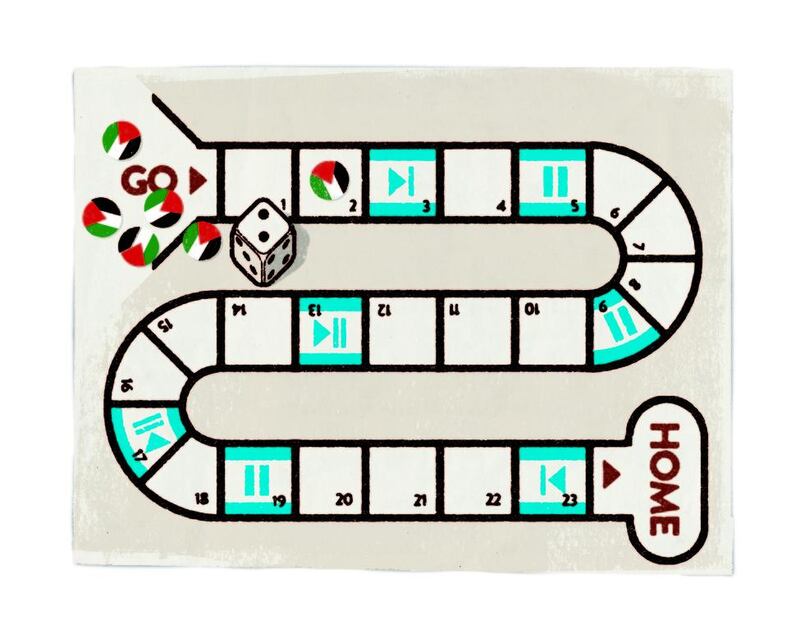The late Australian scholar Patrick Wolfe famously said of settler colonialism that “invasion is a structure not an event”.
These are words worth remembering, in this three-week period between Nakba Day and Naksa Day, which mark respectively Israel’s ethnic cleansing of Palestine in 1947 to 1949, and the beginning of the occupation of the West Bank and Gaza Strip on June 5, 1967.
Anniversaries are important, but they can also mislead: the Nakba began long before the formal establishment of the State of Israel on May 15, 1948, and it has continued ever since.
Part of the continuing Nakba is legal. In the words of a new joint project by Adalah: The Legal Center for Arab Minority Rights in Israel and the Center for Palestine Studies at Columbia University, the Nakba was “more than simply a one-time physical act of expulsion”.
Rather, it also required “a new legal infrastructure to legalise the transfer of lands from Palestinians to Jews, to concomitantly denationalise Palestinians while granting automatic citizenship and legal status to Jews, and to consolidate and protect these foundational forms of dispossession”.
This legal infrastructure, over the years, was consolidated and expanded to include a raft of discriminatory measures, relating to land ownership, housing, municipal planning, education, immigration, and so on.
Palestinians who remained within what became the state of Israel were placed under a military regime for two decades. Thus in the 68 years since Israel’s establishment, there have only been six months – from December 1966 to the beginning of the occupation of the West Bank and Gaza Strip in June 1967 – when Israel was not subjecting large numbers of Palestinians to direct military rule.
While the last 10 to 15 years have seen a well-publicised surge in ultranationalist legislation pass through the Knesset, such a trend is built on the foundations of a formalised ethnocracy; the state of Israel, as currently constituted, see itself not as a state of its citizens, and not even of its Jewish citizens, but of the Jewish people worldwide.
Incitement against Palestinian citizens, meanwhile, as expressed from the Israeli premier down to the views expressed by Jewish Israelis in opinion polls, cannot be understood purely as a recent “lurch to the right”. It is a symptom of a settler-colonial anxiety about demographics that can be traced back to the origins of Zionist settlement.
In 2016, the Nakba is not a historical event. It is the current reality, the de facto “one state” in all of historic Palestine, where Zionist settlement continues apace from the Naqab/Negev to the Jordan Valley, via Jerusalem.
The same impulses that once turned Al Majdal into Ashkelon now seek the transformation of Silwan in East Jerusalem into the “City of David” – or Umm Al-Hiran into Hiran. As an adviser to the then-Israeli prime minister Ehud Olmert put it in 2006, in reference to boosting the Jewish population of both the Galilee and the West Bank, “settlement is settlement”.
The Nakba means that a British Jew from London can move, tomorrow, and live in a colony established on confiscated Palestinian land in the heart of the West Bank, benefiting from a host of legal privileges that even Palestinian citizens are denied.
Indeed, the very act of immigration has its parallel denial of return for denationalised, expelled Palestinian refugees.
If invasion is a structure, not an event, then perhaps, as Cambridge historian Mezna Qato reflected this past week on Twitter, so too is return.
In other words, Palestinian return is not just about the refugees literally going home. It is about transformation, a dismantling and replacing of settler colonial structures, as much as it is about territory.
Not all Palestinian refugees expelled from their homes in 1947 to 1949 ended up beyond the armistice line; some remained inside the new state, and received (second-class) Israeli citizenship. According to the 1950 Absentee Property Law, however, they were still classified as “absent”, and their lands confiscated.
Over the last 20 years, these so-called “present absentees” have built on, and intensified, previous efforts at return and restitution, within the framework of the Palestinian refugees’ struggle more broadly.
Perhaps the most visible manifestation of this activism is the “March of Return”, which takes place annually on the day when Israel officially marks “Independence Day”. Every year, thousands of Palestinians march to the site of a destroyed and depopulated village.
For Palestinians who have Israeli citizenship, but who remain alienated – by state violence and by law – from their lands and homes, the possibility of return is inseparable from a multidimensional sphere of resistance that includes the legal, political and social spheres.
Present absentees are directly challenging the imposed “absence” with camps amid the ruins of ethnically cleansed villages, or the renovation of structures and places of worship.
Their efforts challenge the concept of “return” as a singular event, and also the idea of the Nakba as a passively endured “catastrophe”. The Nakba is a process, one which the Palestinians have always contested. Erasure is met with remembrance, and efforts to subdue have been met with resistance.
When the Palestinian poet and politician Tawfiq Zayyad wrote, “In Lydda, in Ramlah, in the Galilee/We shall remain/Like a wall upon your chest/And in your throat/Like a shard of glass”, it is not about the Palestinians as a spiteful ghost, but about presence; about the failure of settler colonialism to realise its goals, about presence as resistance – and the possibility of a transformational undoing/doing of what settler colonialism has accomplished.
Today, within historic Palestine, there is roughly a parity of Jewish Israelis and Palestinians. That Palestinian population includes more than 2 million refugees, many of whom can see – or even touch – the lands from which they were expelled. Palestinians in regional refugee camps, meanwhile, remain sometimes only a few dozen miles from their old villages and cities.
To see, as Ms Qato said, return as a structure is a pointer to a conversation that goes well beyond the physical return of Palestinian refugees. It prompts questions about the decolonisation of space, about the politics of what will come next, and about the possibility of replacing the logic of settler colonial displacement and privilege with a logic of liberation.
A characteristic of the continuing crisis and divisions within Palestinian politics is the absence of such thinking among the parties and so-called representative bodies. Indeed, these bodies and factions are currently manifestly ill-equipped to realise return and liberation. A radical overhaul is sorely needed.
At the grassroots, however, among youth, activists and academics, in Palestine and in the diaspora, these questions are being asked, and answered, in conversations and in practice, signposts on the way home, and to what sort of home it will be.
Ben White is a journalist and the author of Israeli Apartheid: A Beginner’s Guide
On Twitter: @benabyad





